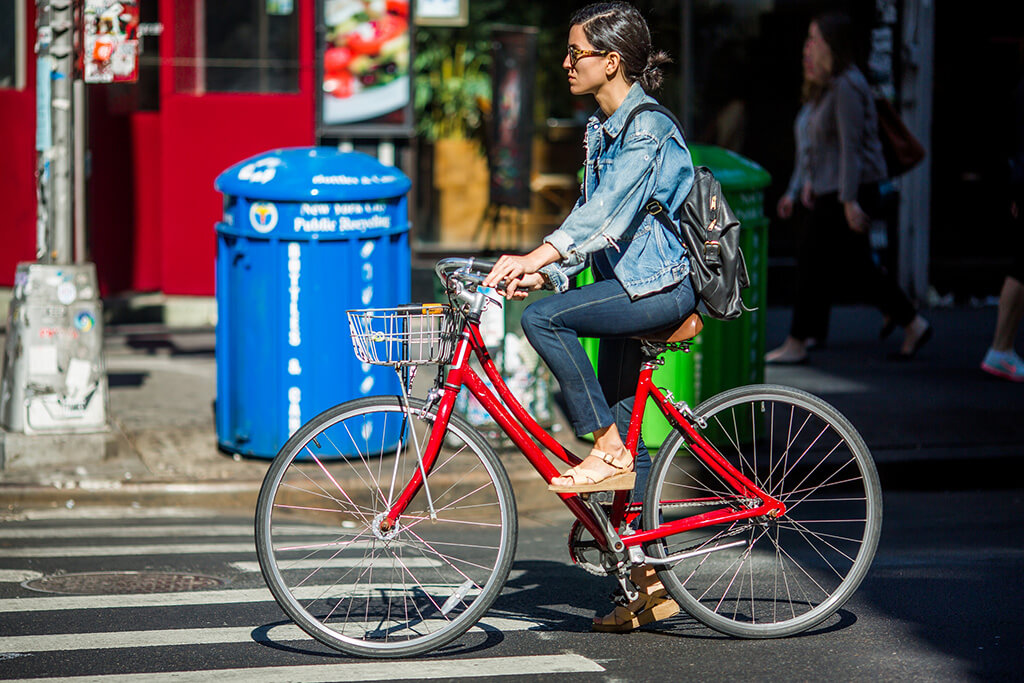Autumn Gear Guide
Find inspiration in our Gear Guide that will keep you out on your bike through wind or rain.
Download NowPeopleForBikes Bicycling Participation study busts some of the most common myths about cycling.
PeopleForBikes once commissioned the US Bicycling Participation Study, a benchmark report on cycling participation across the US. Along with painting an encouraging picture of growth in rates of cycling nationwide, the report also collected valuable demographic data on all of these two-wheeled tricksters whizzing down the street. For many people, the demographics would be quite surprising. Despite significant advancements in the rates and popularity of everyday cycling across the continent, cycling still can’t seem to shake the reputation of being an exclusive activity for a very certain few people. Using the data from the Bicycling Participation Study, PeopleForBikes rounded up seven of the most common myths about cycling and laid them into an infographic, so we can easily see that they are just plain false. Let’s have a look.

Photo by Thomas Hawk
The prevailing notion surrounding bicycling in the US is that it is a niche-market activity, confined to the side of highways with the lycra-clad racers or the streets of NYC and San Francisco with the fixie-riding bike messengers. In reality, lots of people are riding bikes. The participation study found that 104 million Americans rode a bike at least once in 2014, accounting for one third of the US population.
A common stereotype about people on bikes is that they’re anti-car or just don’t drive. This myth is particularly harmful in that it leads to a high level of antagonism and subsequent danger on the roads because the two sides are pitted against each other when cyclists are perceived as an “other.” In reality, 88% of American bike riders also drive a car. When drivers complain about cyclists getting in their way or not following the rules of the road, it would be helpful to note that cyclists are, in fact, also drivers.
Okay, a lot of bike riders are white, but the ratio is not as imbalanced as most people assume and it is constantly changing. 58% of regular bike riders are white, compared to 42% people of color. But of Americans who identify as Hispanic/ Latino, 43% rode at least once in 2014, compared to only 33% of black people and 32% of white people.
The reputation of cycling as an elite activity is harmful because, if left uncontested, it prevents people from trying out biking since they assume they can’t afford it. In fact, everyday cycling is one of the easiest ways to save money by greatly reducing household transportation costs and long-term individual health care spending. And sure, carbon fibre road bikes are expensive, but a used commuter bike isn’t, especially not compared to car. PeopleForBikes’ participation study found that 40% of adults who ride in the US have an income of less than $20,000.
Let’s face it, nobody wants to get hit by a car. Of those surveyed, 52% of adults reported fear of being hit, while 46% said they would ride more if bikes and motorized traffic were physically separated. Fear of serious injury is, unfortunately, something that crosses all demographics. Over 40% of black, Hispanic, and white respondents said they would ride more with safer infrastructure, while 48% of women and 45% of men said the same thing. Most people on bikes recognize the many benefits of cycling for a happy, active lifestyle, so they choose to ride despite their fears, but those high percentages just prove that more protected bike lanes can mean the difference between okay and excellent cycling rates across the nation.
Biking is so easy, even my grandmother can do it! No but seriously, why would my grandmother not be able to do it? While younger people do constitute the majority of bike riders, rates of cycling in older populations are on the rise. Over 55% of adults aged 55 and older see bicycling as a convenient way to get around and 44% said they want to bike more often. Of transportation riders 55 and over, 70% reported running their errands by bike, more than any other age group.
Okay, again, there are more men riding than women. But the gap is not nearly as large as most people think. Of the 104 million people who got on a bike in 2014, 45 million (44%) were women, compared to 58 million (56%) men. Some people assume that women ride less because they often bear more responsibility for moving children around. But interestingly, the participation study found that women with children actually ride more than children without (32% vs 19%), and nearly two-thirds of women who did ride do so only for recreation.
While some of the statistics are very surprising and others a little less-so, the big takeaway is this: biking is not a fringe activity, people want to ride. People of all stripes are getting on bikes or are interested in doing so. The more places we have to ride and the more accessible bikes and bike education becomes, the closer we move to becoming a society where biking is not only not fringe, it’s commonplace.
The full US Bicycling Participation Report can be read here. PeopleForBikes also produced a report entitled Building Equity: Race, Ethnicity, Class, and Protected Bike Lanes which elaborates on the demographics of cycling participants in the US. We previously covered it, and the full report can be read here.
Find inspiration in our Gear Guide that will keep you out on your bike through wind or rain.
Download Now
FYI, I think there’s a typo in the paragraph for Myth #7:
“the participation study found that women with children actually ride more than children without”
Should probably read “women with children actually ride more than women without”?
That’s one of my favorite stats! My mom definitely inspired me to ride a bike by setting a wonderful example.
Comments are closed.